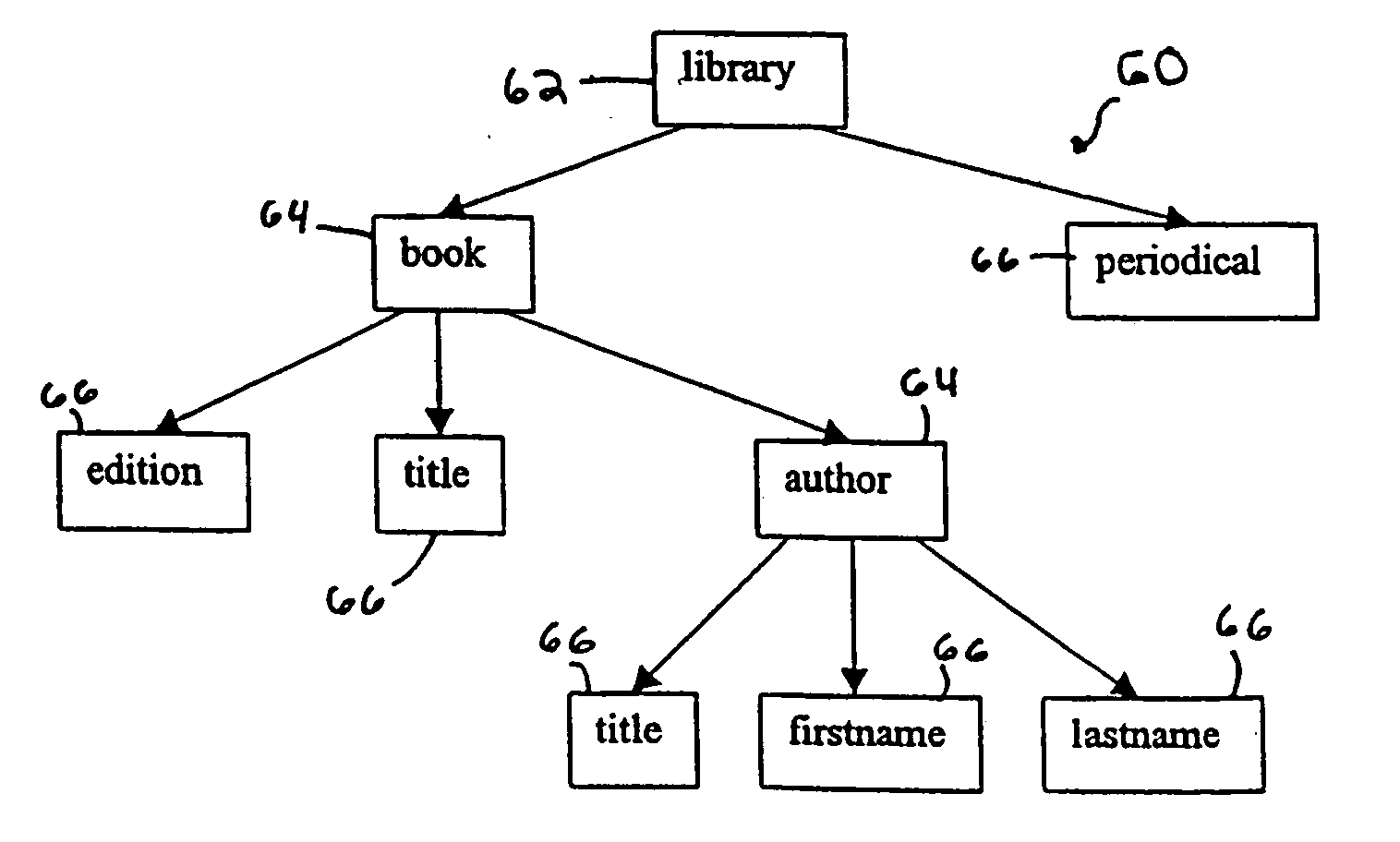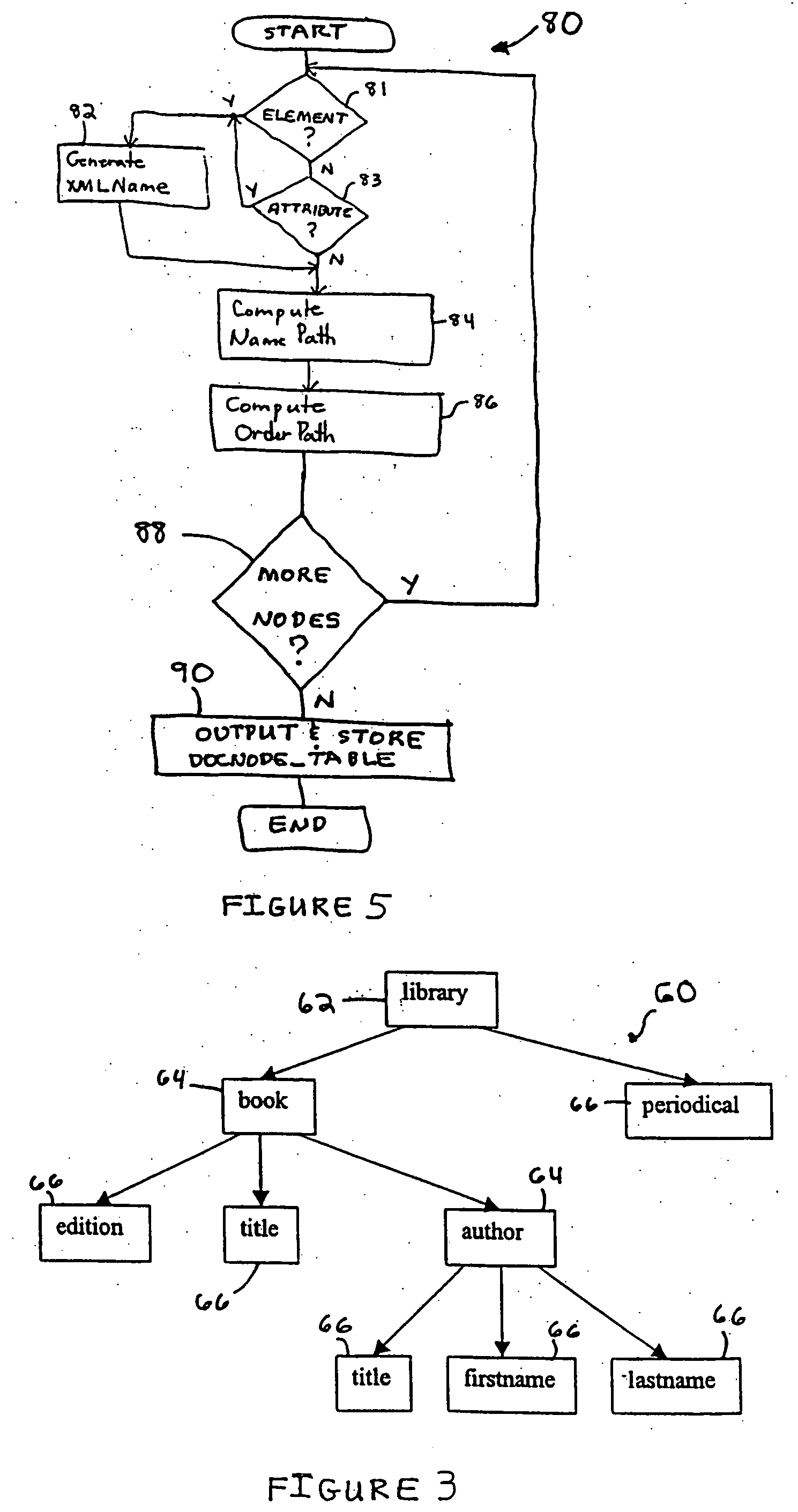System and method for the storage, indexing and retrieval of XML documents using relational databases
a technology of relational databases and xml documents, applied in relational databases, instruments, data processing applications, etc., can solve the problems of computationally more expensive operations, and achieve the effect of efficient storage, indexing and searching of xml documents, and efficient storag
- Summary
- Abstract
- Description
- Claims
- Application Information
AI Technical Summary
Benefits of technology
Problems solved by technology
Method used
Image
Examples
Embodiment Construction
[0018] The invention is particularly applicable to a software implemented XML document storage and retrieval system and method and it is in this context that the invention will be described. It will be appreciated, however, that the system and method in accordance with the invention has greater utility since it may be implemented in hardware instead of software.
[0019]FIG. 1 is a block diagram illustrating an embodiment of a software-based XML document storage and retrieval system 20 in accordance with the invention. In this embodiment, the storage and retrieval system 20 may be executed by a computer 22. The computer 22 may be a typical stand-alone personal computer, a computer connected to a network, a client computer connected to a server or any other suitable computer system. For purposes of illustration only, an embodiment using a stand-alone computer 22 will be described herein.
[0020] The computer 22 may include a central processing unit (CPU) 28, a memory 30, a persistent st...
PUM
 Login to View More
Login to View More Abstract
Description
Claims
Application Information
 Login to View More
Login to View More - R&D
- Intellectual Property
- Life Sciences
- Materials
- Tech Scout
- Unparalleled Data Quality
- Higher Quality Content
- 60% Fewer Hallucinations
Browse by: Latest US Patents, China's latest patents, Technical Efficacy Thesaurus, Application Domain, Technology Topic, Popular Technical Reports.
© 2025 PatSnap. All rights reserved.Legal|Privacy policy|Modern Slavery Act Transparency Statement|Sitemap|About US| Contact US: help@patsnap.com



